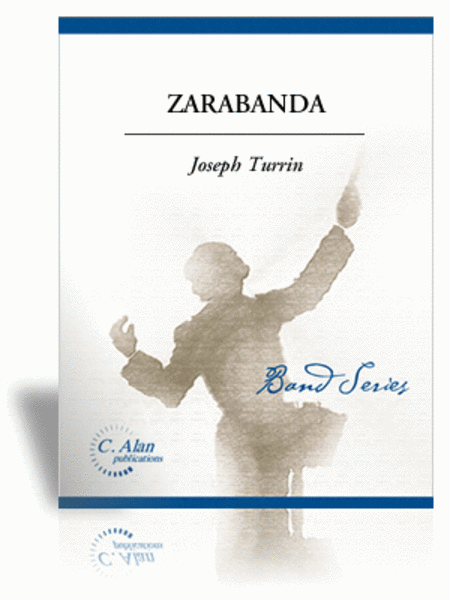Zarabanda
Xylophone/Marimba Feature
-
Ships in 3 to 4 weeks
Details
Description
SKU: CN.16431
Xylophone/Marimba Feature. Composed by Joseph Turrin. Score only. Duration 5:00. Published by C. Alan Publications (CN.16431).The piece is in several sections with a Latin style rhythm that occasionally gets interrupted by accented outbursts from the ensemble. As the piece develops and moves from section to section, new rhythmic and melodic ideas are introduced. The piece culminates with a bravura mallet cadenza and an optional cadenza, which calls for the additional skills of playing the timbales, bongos, tom-toms, and conga drum.
I composed Zarabanda for a Latin American recording project with RCA Records and percussionist Evelyn Glennie. Although the recording project was never realized by RCA, I decided that the work would make a wonderful vehicle for Ms. Glennie along with wind ensemble accompaniment. The piece is in several sections with a Latin style rhythm that occasionally gets interrupted by accented outbursts from the ensemble. The soloist alternates between the xylophone, for the more accented staccato passages and scales, and the marimba, for the more melodic material. As the piece develops and moves from section to section, new rhythmic and melodic ideas are introduced. The piece culminates with a bravura cadenza - the soloist performing rapid-fire staccatos and scales on the xylophone. There is also an optional cadenza, which calls for the additional skills of playing the timbales, bongos, tom-toms, and conga drum. The piece concludes with a quick coda as the solo xylophone and ensemble build a fiery rhythmic syncopation. There are more rapidly accented staccatos, a quick scale, and the final bar. The zarabanda is a late 16th and 17th century Spanish dance in a lively alternating 6/8 and 3/4 time. Some evidence suggests that the zarabanda originated in the Spanish colonies in America, making it the first popular Latin American dance. Other evidence seems to suggest an African origin. A possible scenario might be that the zarabanda was brought to Spain by the Moors during the 12th Century, but was heavily modified by American influences during the early 16th Century. The zarabanda and its French descendant, the sarabande, were very different dances. While the French dance was a slow dance in 3/4 time, the Spanish original was very lively, alternating between 6/8 and 3/4 time. In the beginning, the zarabanda was considered very indecent. Cervantes writes about the "diabolic zarabanda" in one of his short stories, and in 1583, a law was passed against singing the zarabanda. The penalties for breaking it were banishment for women and 200 whiplashes and 6 years of galley service for men.

 Share
Share